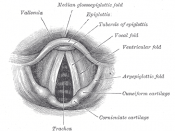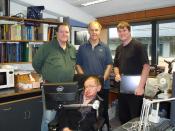Relaxation is the absence of tension in the body. The main muscles used in the breathing are the diaphragm, the intercostal muscles and the abdominal muscles. They must always be relaxed and under control in order to breathe correctly. Any tension in these will result in a lack of control and capacity. Many performers have tension in the shoulder, neck, back and jaw, which results in a poor breathing.
A technique they should use to release the tension is tensing then relaxing again. This helps relax the shoulder, neck, back and jaw.
Projection of voice is a way to "throw" your voice away from you so it can be heard. To project your voice you need to use correct breathing and good posture. Correct posture requires you to stand straight up and erect, it is NOT slumping or lying down. The correct breathing style Intercostal Diaphragmatic Breathing as it expands your chest capacity.
It gives you capacity and control.
The process of turning breath into voice starts with breathing air in. The best way to do this is using Intercostal Diaphragmatic Breathing; this is when your intercostal muscles pull your ribs upwards and outwards, your diaphragm descends and thus creating a larger chest capacity. This cause almost a vacuum effect sucking air into your mouth down your pharynx through your larynx and down into the trachea, then into the bronchi and into the lungs. When we breathe out the opposite occurs decreases the chest capacity pushing the air out.
As the passes through the larynx it makes the vocal cords vibrate and the breath pushes the soundwaves out of your mouth. When the vocal cords vibrate creating the fundamental tone. Fundamental tone travels to the resonators and becomes voice.
The amplification of fundamental tone is done in the resonating...


